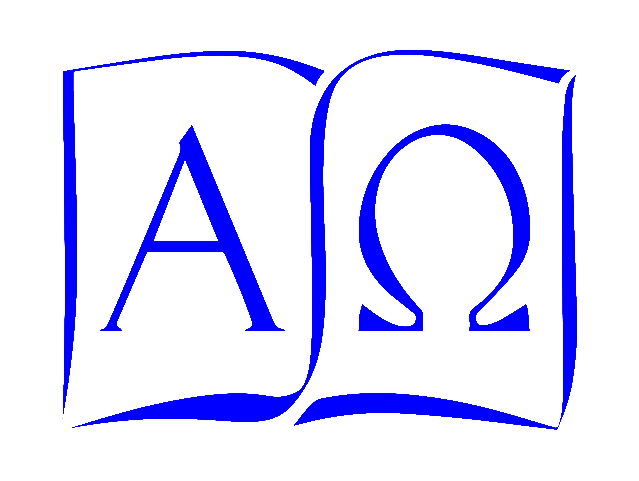My intermediate and advanced Greek and Latin classes are largely translation-based. There’s a lot of discussion among Latin teachers about whether that’s a good approach, but much of the dispute is, I think, mired in terminological ambiguity, and at least some of the objections to translation classes don’t entirely apply to what we’re doing. What I’m looking for is emphatically not a mechanical translation according to rigid and externally objective rules (“Render the subjunctive with ‘might’,” “Translate the imperfect with the English progressive,” or the like), but rather the expression of the student’s understanding of each sentence as a whole, in the context of the larger discussion or narrative.
We aren’t there to produce publishable translations: that’s an entirely different game, with different rules. For us, translations are the means to an end: the understanding is the real point of the process, but it’s hard to measure understanding unless it’s expressed somehow. The translations, therefore, are like a scaffold surrounding the real edifice — engagement with the text as a whole: its words, its sounds, and its various levels of meaning. That engagement is hard to pin down, but it allows us to make a genuine human connection with the mind of the author. A detached mechanical “translation”, though, is like a scaffold built around nothing, or the new clothes without the emperor. Even were artificial intelligence able to advance to the point that a computer could produce a flawless rendition of a text into another language, it still would not have achieved what is essential. It will not have understood. It will not have savored the words, grasped the concepts, combined them into larger ideas, applied them to new contexts, or come to a meeting of the minds with the author.
This is not always an easy concept for students to grasp. Some are fretful to get exactly the right wording (as if there were such a thing), but apparently less concerned with understanding the essential meaning. At the beginning of the year, I usually have a few students who make the (to me bizarre) claim, “I translated this sentence, but I don’t understand it.” My response is always some variation on, “If you didn’t make sense of it, you didn’t really translate it.”
We talk about making sense of the passage, but even that turn of phrase may be one of the little arrogances of the modern world. The prevalent modern paradigm suggests that the world is without order or meaning unless we impose it; Christianity, however, presupposes a world informed by its Creator with a consistent meaning that we only occasionally perceive. For us, it would probably be more accurate, and certainly more modest, to talk of finding or discovering the sense in the passage.
Whether we call it “making sense” or “finding sense”, though, it is not just the stuff of language classes. Every discipline is ultimately about finding meaning in and through its subject matter. In language and literature we look for the informing thought behind speech and writing. In history we look to understand the whole complex relationship of individuals and groups through time, with their ideas, movements, and circumstances, and what it all meant for them and what it means for us today. The sciences look to find the rationale in the order of the physical universe, mathematics the meaning of pure number and proportion, and philosophy to find the sense of sense itself. Each discipline has its own methods, its own vocabulary, and its own techniques. Each has its own equivalent of the translation exercise, too — something we do not really for its own sake, but to verify that the student has grasped something larger that cannot be measured directly. But behind those differences of method and process, all of them are about engaging with the underlying meaning. All real learning is. (In that respect it differs from training, which is not really about learning as such, but about acquiring known skills. Both learning and training are essential to a well-rounded human being, but they shouldn’t be confused with one another.)
From a secular point of view, this must seem a rather granular exercise with many dead ends. That each thing should have its own limited kind of meaning, unrelated to every other, seems at least aesthetically unsatisfying; it offers us Eliot’s Waste Land: a “heap of broken images”, pointing nowhere. Language is fractured, and our first great gift of articulate speech clogs and becomes useless.
Our faith offers us something else: we were given the power to name creation — to refer to one thing through or with another — as a way of proclaiming the truth of God, surely, but also, I think, as a kind of hint as to how we should view the whole world. Everything, viewed properly, can be a sign. As Paul says in Romans, “For since the creation of the world God’s invisible qualities—his eternal power and divine nature—have been clearly seen, being understood from what has been made, so that men are without excuse” (1:20, NIV); Alanus ab Insulis (1128-1202) wrote, about 1100 years later, “Every creature in the world is like a picture to us, or a mirror.” Signification itself is transformed and transfigured, sub specie aeternitatis, from a set of chaotic references into a kind of tree, in which the signifiers converge, both attesting the unitary truth of the Lord and endowing every created thing in its turn with a holy function.

One response
[…] I’ve already talked about the “I translated it but I don’t understand it” phenomenon here: ; the claim has never made sense to me, since if you actually translated it, that means that you […]